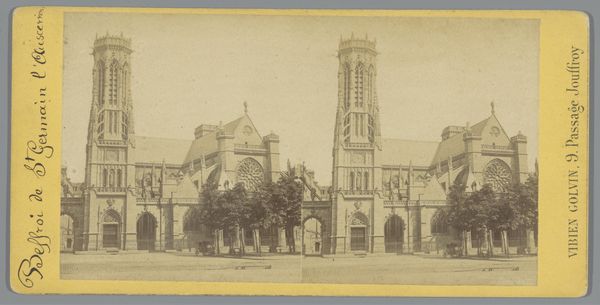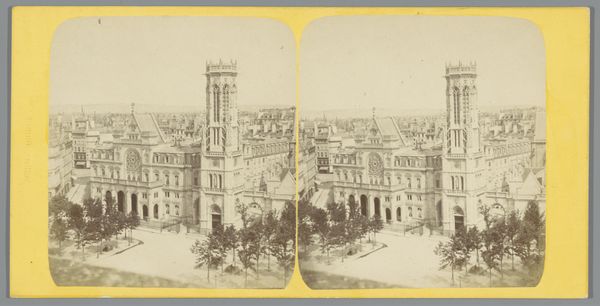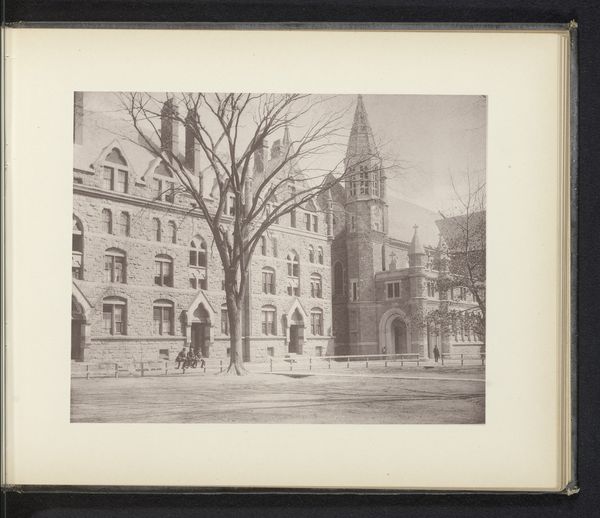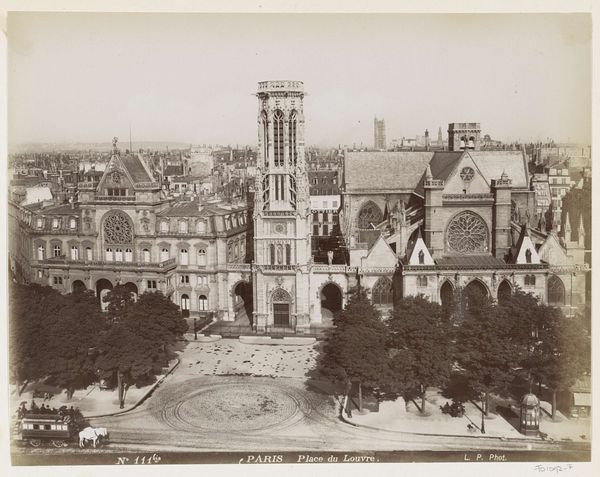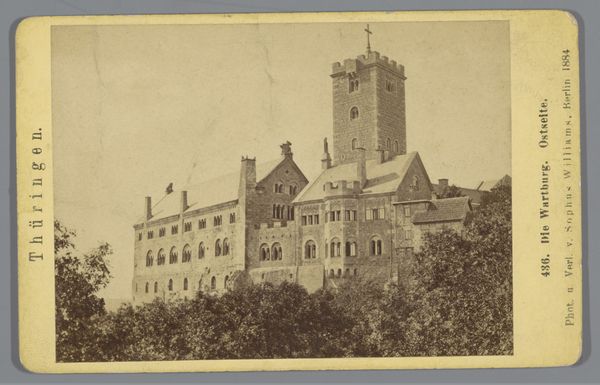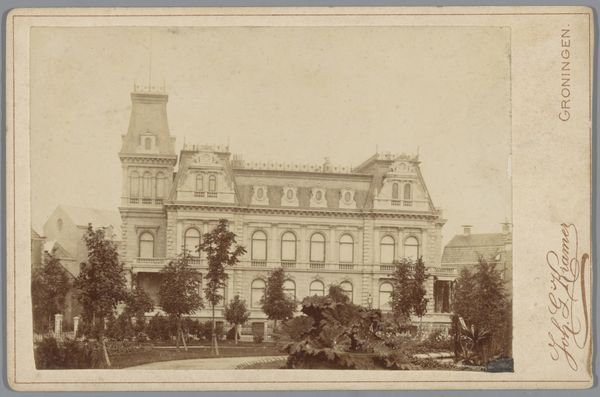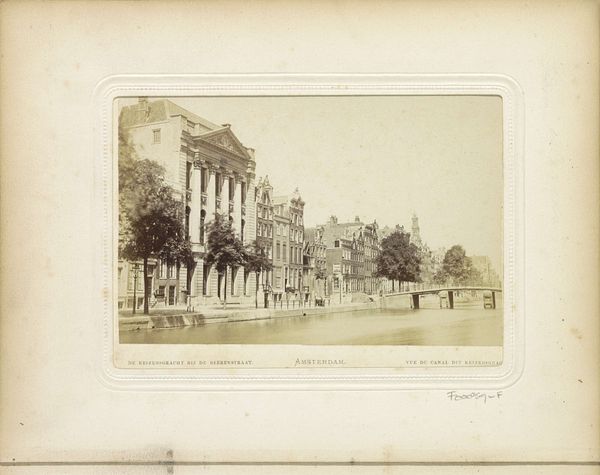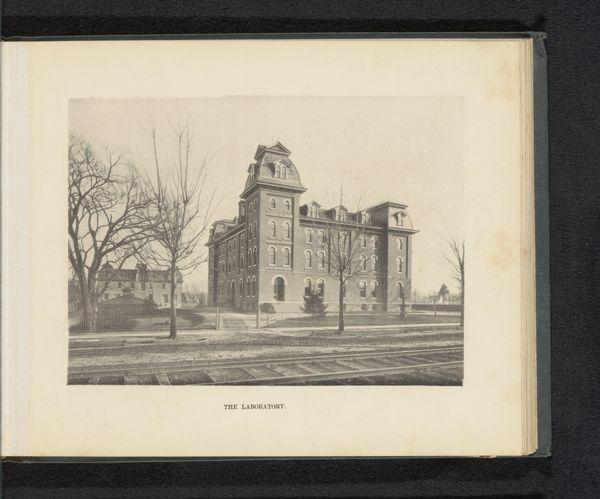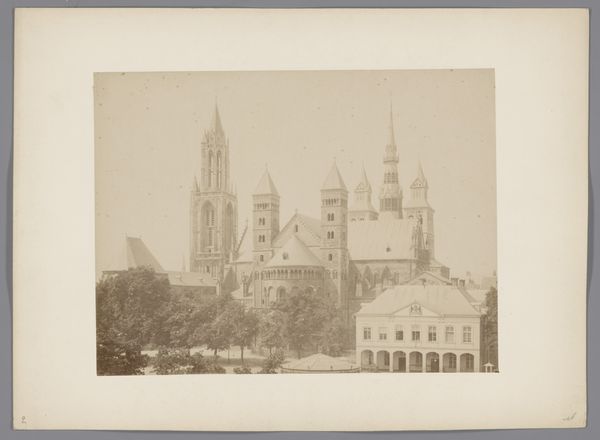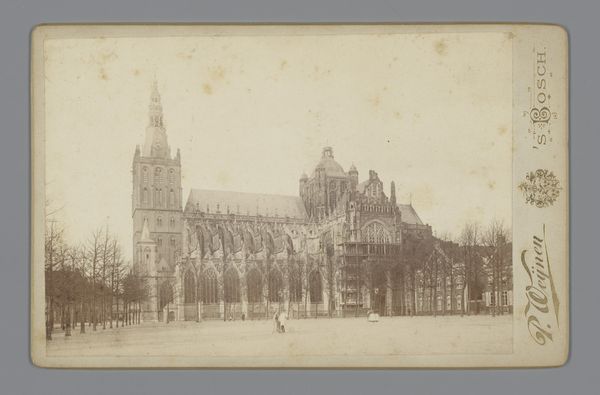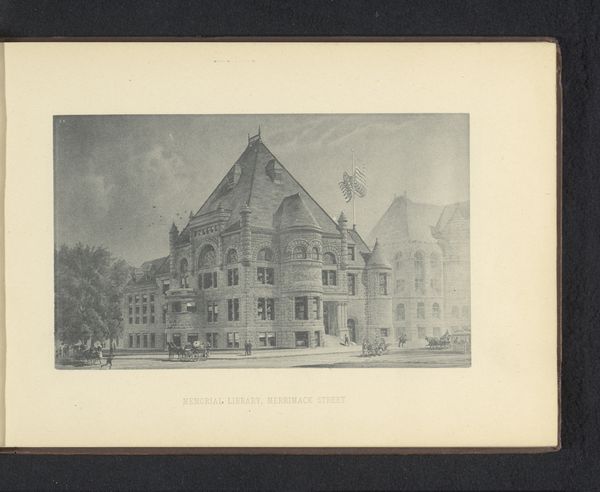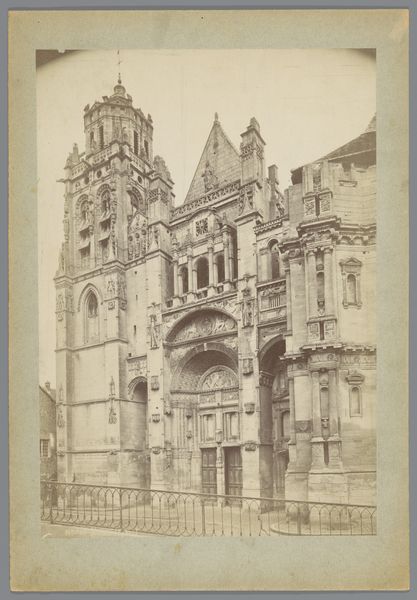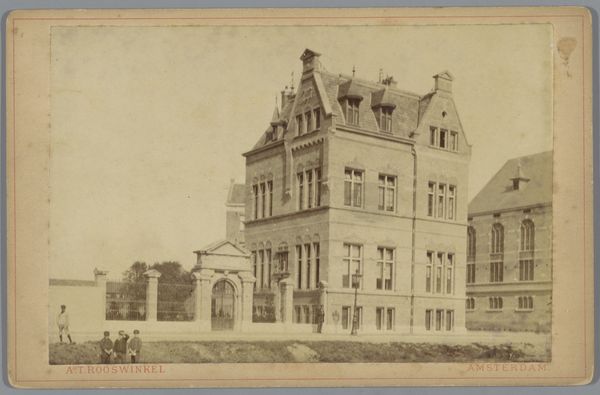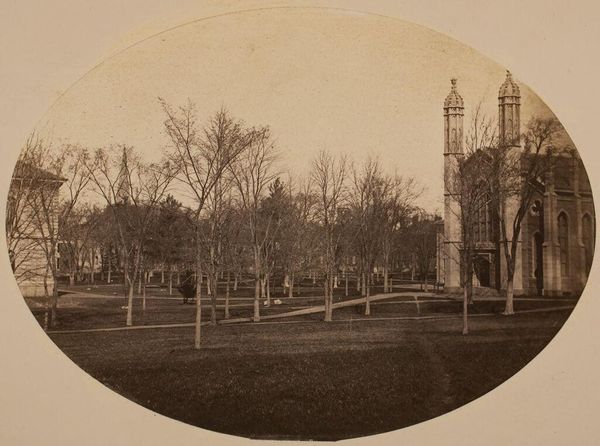
Stadhuis van het eerste arrondissement van Parijs en de kerk van Saint-Germain-l'Auxerrois, Parijs 1887 - 1900
0:00
0:00
print, photography
# print
#
photography
#
cityscape
Dimensions: height 211 mm, width 274 mm, height 219 mm, width 280 mm
Copyright: Rijks Museum: Open Domain
Editor: Here we have an undated photograph from sometime between 1887 and 1900 of the Stadhuis van het eerste arrondissement and the Église Saint-Germain-l'Auxerrois in Paris, likely a print made from a photographic negative. I am struck by how the buildings are composed together, rising vertically. What elements stand out to you when considering its construction? Curator: Thank you. Let us consider the organization of forms, particularly the way geometric volumes interact to create depth. Notice how the photographer has carefully arranged these elements, leading the eye from the base in the lower field of vision along converging planes into the space upwards into the background and horizon. These converging lines effectively flatten out any perception of recessional depth. How do you see that contributing to the overall feeling of the piece? Editor: I hadn't thought of it like that, but I see the flattened space in a new way now, almost as a surface pattern. Considering it is a cityscape, is there an intent to document, or more so aesthetic consideration in the construction? Curator: One must carefully evaluate form and intention. Observe the contrast in tones. Lighter stone offset the darker tree groupings at the front. These devices guide our reading. But the artist also captured something essential about place using line, plane and volume that transcends objective record. To be sure, an urban panorama, but ultimately, a work of balanced forms, no? Editor: Absolutely. The balance between the shapes now jumps out, more than just its qualities as a representation of place. It reframes what the buildings 'mean'. Thanks! Curator: Precisely. Appreciating those compositional aspects enables us to better understand how art's significance extends beyond surface representation alone.
Comments
No comments
Be the first to comment and join the conversation on the ultimate creative platform.
